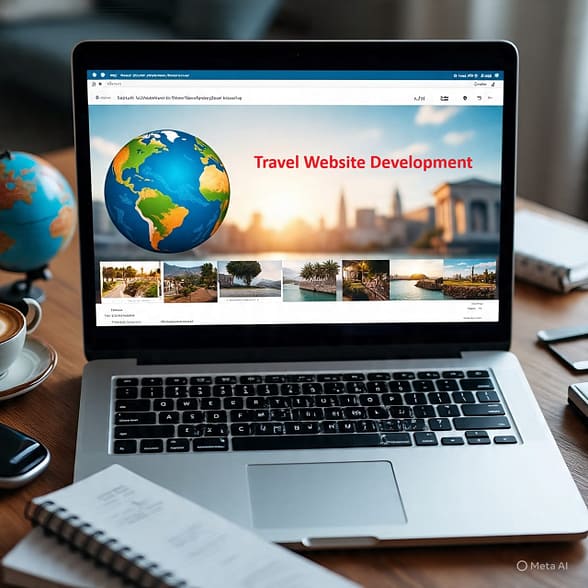Travel Website Development: A Step-by-Step Guide to Building Your Dream Platform
The travel industry is booming, and having a stunning, user-friendly website can set your business apart. A tour operator service, or a hotel booking platform. A well-designed website is your digital storefront.
What features should you include? And how do you ensure your site stands out in a competitive market?
In this guide, we’ll walk you through the essentials of travel website development, from planning to launch.
Why Invest in a Professional Travel Website?
✔ 24/7 Booking Availability – Customers can book trips anytime, anywhere.
✔ Showcase Stunning Destinations – High-quality visuals inspire wanderlust.
✔ Boost Credibility – A sleek, professional site builds trust.
✔ Increase Revenue – Easy booking systems drive more sales.
✔ Gain a Competitive Edge – Stand out from generic travel platforms.
Now, let’s break down the key steps to building a successful travel website.
Step 1: Define Your Niche & Target Audience
Not all travel websites are the same. Your site’s design and functionality will depend on your niche:
-
Tour Operators – Focus on package deals and itineraries.
-
Hotel Booking Sites – Emphasize room availability, pricing, and reviews.
-
Adventure Travel – Highlight unique experiences like hiking, diving, or safaris.
-
Travel Blogs & Guides – Prioritize engaging content and SEO.
Pro Tip: Research competitors to see what works in your niche—then make it better!
Step 2: Choose the Right Platform
You don’t need to code from scratch. Here are the best platforms for travel websites:
-
WordPress + Travel Plugins – Flexible, customizable, and SEO-friendly.
-
Wix or Squarespace – User-friendly drag-and-drop builders.
-
Custom Development – Best for large-scale booking platforms.
Step 3: Must-Have Features for a Travel Website
To keep visitors engaged and drive bookings, include these essential features:
✅ Responsive Design – Mobile-friendly is a must (over 60% of travel bookings happen on phones).
✅ Search & Filters – Let users find trips by destination, price, or dates.
✅ Online Booking & Payment Gateway – Secure options like PayPal, Stripe, or credit card processing.
✅ High-Quality Media – Stunning images, videos, and virtual tours.
✅ Customer Reviews & Testimonials – Social proof builds trust.
✅ Live Chat Support – Instant answers boost conversions.
✅ Blog Section – Travel tips and guides improve SEO and engagement.
Step 4: Optimize for SEO & User Experience (UX)
Improve visibility with:
🔹 Keyword Optimization – Use terms like “best Bali resorts” or “affordable Europe tours.”
🔹 Fast Loading Speed – Optimize images and use caching plugins.
🔹 Easy Navigation – Clear menus and intuitive booking flow.
🔹 Multilingual Support – Attract international travelers.
Step 5: Marketing Your Travel Website
Even the best website needs traffic. Promote yours with:
📌 Social Media Marketing – Instagram & Pinterest are perfect for travel visuals.
📌 Email Campaigns – Send exclusive deals to subscribers.
📌 Influencer Collaborations – Partner with travel bloggers for exposure.
📌 Google Ads & Meta Ads – Target users actively searching for trips.
Final Thoughts
A well-designed travel website can transform your business, bringing in more bookings and establishing your brand as a trusted authority. By focusing on user experience, seamless booking, and strong SEO, you’ll create a platform that travelers love.
Ready to build your dream travel website? Start planning today, or partner with a professional web developer to bring your vision to life!





